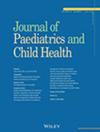FeBRILe3: Risk-Stratification and Diagnosis of Serious Bacterial Infections in Febrile Infants Less Than 3 Months Old
Abstract
Objectives
Evidence-based recommendations exist for early discharge (before 48 h) of young infants with fever without source (FWS) at low risk of serious bacterial infections (SBIs). However, concerns regarding the applicability of international data to local contexts may hinder implementation. We aimed to describe the local epidemiology of FWS and evaluate a newly implemented risk-stratification guideline to support practice change.
Methods
Prospective observational study of infants aged < 3 months admitted for investigation and management of FWS to two hospitals in Perth, Western Australia following implementation of an FWS risk-stratification guideline (August 2019–December 2021). We assessed the risk-stratification rule performance and determined the positive/negative likelihood ratios of individual patient characteristics for predicting SBI diagnosis.
Results
Five hundred infants were enrolled in the study cohort (median age 34 days, 36% female). SBI was diagnosed in 159 infants (32%), including urinary tract infection (n = 140), bacteraemia (n = 18) and bacterial meningitis (n = 9). Viruses were detected in 174 out of 406 tested infants (43%). Seventy-one infants met low-risk criteria (14%); only 69 out of 360 infants without SBI were classified as low risk (19%). The risk-stratification criteria demonstrated 99% sensitivity and 97% negative predictive value for SBI diagnosis, but only 21% specificity. Patient characteristics associated with a reduced likelihood of SBI diagnosis included female sex, sick contact exposure and virus detection.
Conclusions
Meeting the low-risk criteria successfully excluded most infants with SBI; however, only a small proportion of infants without SBI fulfilled these criteria. Integrating additional patient characteristics into updated risk-stratification algorithms may improve the predictive value of future prediction tools.
Trial Registration
Australia and New Zealand Clinical Trials Register (ACTRN12619001010189)

 求助内容:
求助内容: 应助结果提醒方式:
应助结果提醒方式:


